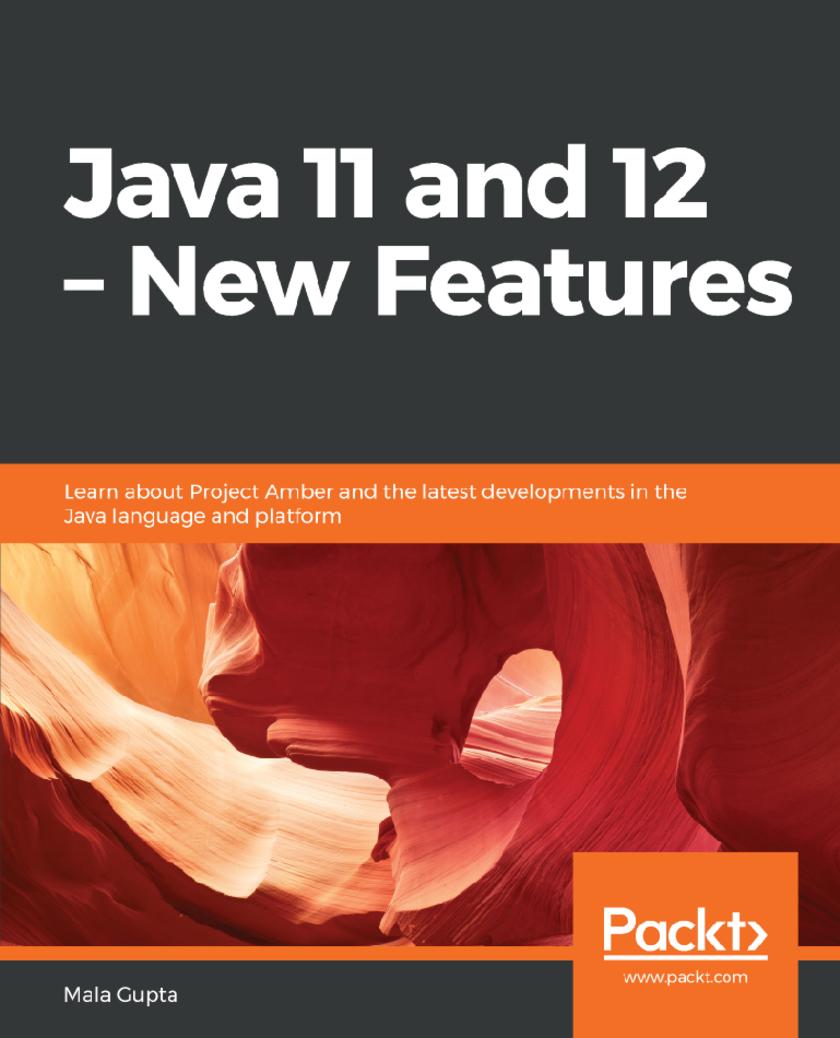
Java 11 and 12 – New Features
¥54.49
Enhance your development skills with Java’s state-of-the-art features and projects to make your applications leaner and faster Key Features * Overcome the challenges involved in migrating to new versions of Java * Discover how Oracle has bridged the gap between Java and native code * Make the best use of new Java features and libraries in your applications Book Description With its new six-monthly release cadence, Java is moving forward faster. In addition to planned version releases, a lot of work is currently being undertaken on various Java projects at Oracle. In order to make best use of the new features in their applications and libraries, you must be well-versed with the most recent advancements. Java 11 and 12 – New Features will take you through the latest developments in Java, right from variable type inference and simplified multithreading through to performance improvements, which are covered in depth to help you make your applications more efficient. This book explains the relevance and applicability of Java's new features, and answers your questions on whether to invest in migrating to new Java versions and when to migrate. You'll also get to grips with platform features, such as AppCDS and new garbage collectors, to tune and optimize your application—from reduced launch time and latency to improved performance and throughput. By the end of this book, you will be equipped with a thorough understanding of the new features of Java 11, 12, and Project Amber, and possess the skills to apply them with a view to improving your application's performance. What you will learn * Study type interference and how to work with the var type * Understand Class-Data Sharing, its benefits, and limitations * Discover platform options to reduce your application’s launch time * Improve application performance by switching garbage collectors * Get up to date with the new Java release cadence * Define and assess decision criteria for migrating to a new version of Java Who this book is for If you’re an executive or solutions architect responsible for technology selection or Java migration decisions, this Java book is for you. You’ll also benefit from this book if you’re a computer science enthusiast curious to learn about the latest and upcoming Java features. This book will help you migrate your solutions from Java 8 or older to the latest Java release.

Command Line Fundamentals
¥63.21
Master shell basics and Unix tools and discover easy commands to perform complex tasks with speed Key Features *Learn why the Bash shell is widely used on Linux and iOS *Explore advanced shell concepts, such as pipes and redirection *Understand how to use Unix command-line tools as building blocks for different tasks Book Description The most basic interface to a computer—the command line—remains the most flexible and powerful way of processing data and performing and automating various day-to-day tasks. Command Line Fundamentals begins by exploring the basics, and then focuses on the most common tool, the Bash shell (which is standard on all Linux and iOS systems). As you make your way through the book, you'll explore the traditional Unix command-line programs as implemented by the GNU project. You'll also learn to use redirection and pipelines to assemble these programs to solve complex problems. By the end of this book, you'll have explored the basics of shell scripting, allowing you to easily and quickly automate tasks. What you will learn *Use the Bash shell to run commands *Utilize basic Unix utilities such as cat, tr, sort, and uniq *Explore shell wildcards to manage groups of files *Apply useful keyboard shortcuts in shell *Employ redirection and pipes to process data *Write both basic and advanced shell scripts to automate tasks Who this book is for Command Line Fundamentals is for programmers who use GUIs but want to understand how to use the command line to complete tasks faster.
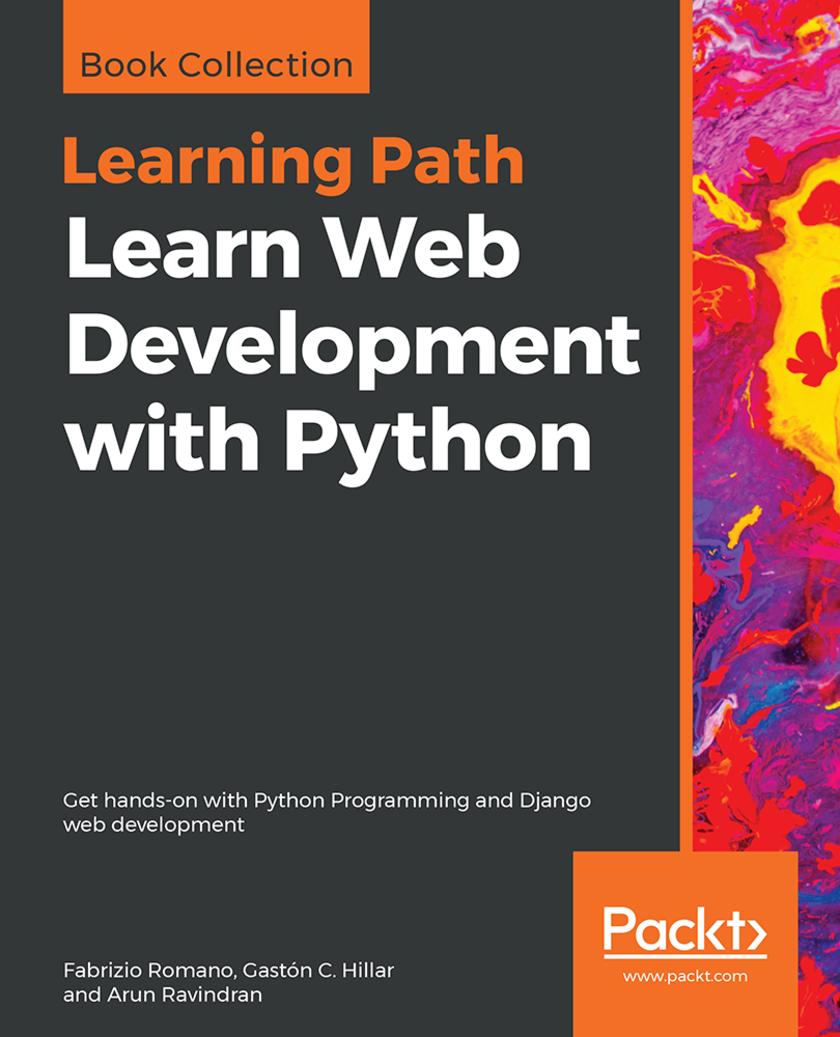
Learn Web Development with Python
¥90.46
A comprehensive guide to Python programming for web development using the most popular Python web framework - Django Key Features *Learn the fundamentals of programming with Python and building web apps *Build web applications from scratch with Django *Create real-world RESTful web services with the latest Django framework Book Description If you want to develop complete Python web apps with Django, this Learning Path is for you. It will walk you through Python programming techniques and guide you in implementing them when creating 4 professional Django projects, teaching you how to solve common problems and develop RESTful web services with Django and Python. You will learn how to build a blog application, a social image bookmarking website, an online shop, and an e-learning platform. Learn Web Development with Python will get you started with Python programming techniques, show you how to enhance your applications with AJAX, create RESTful APIs, and set up a production environment for your Django projects. Last but not least, you’ll learn the best practices for creating real-world applications. By the end of this Learning Path, you will have a full understanding of how Django works and how to use it to build web applications from scratch. This Learning Path includes content from the following Packt products: *Learn Python Programming by Fabrizio Romano *Django RESTful Web Services by Gastón C. Hillar *Django Design Patterns and Best Practices by Arun Ravindran What you will learn *Explore the fundamentals of Python programming with interactive projects *Grasp essential coding concepts along with the basics of data structures and control flow *Develop RESTful APIs from scratch with Django and the Django REST Framework *Create automated tests for RESTful web services *Debug, test, and profile RESTful web services with Django and the Django REST Framework *Use Django with other technologies such as Redis and Celery Who this book is for If you have little experience in coding or Python and want to learn how to build full-fledged web apps, this Learning Path is for you. No prior experience with RESTful web services, Python, or Django is required, but basic Python programming experience is needed to understand the concepts covered.
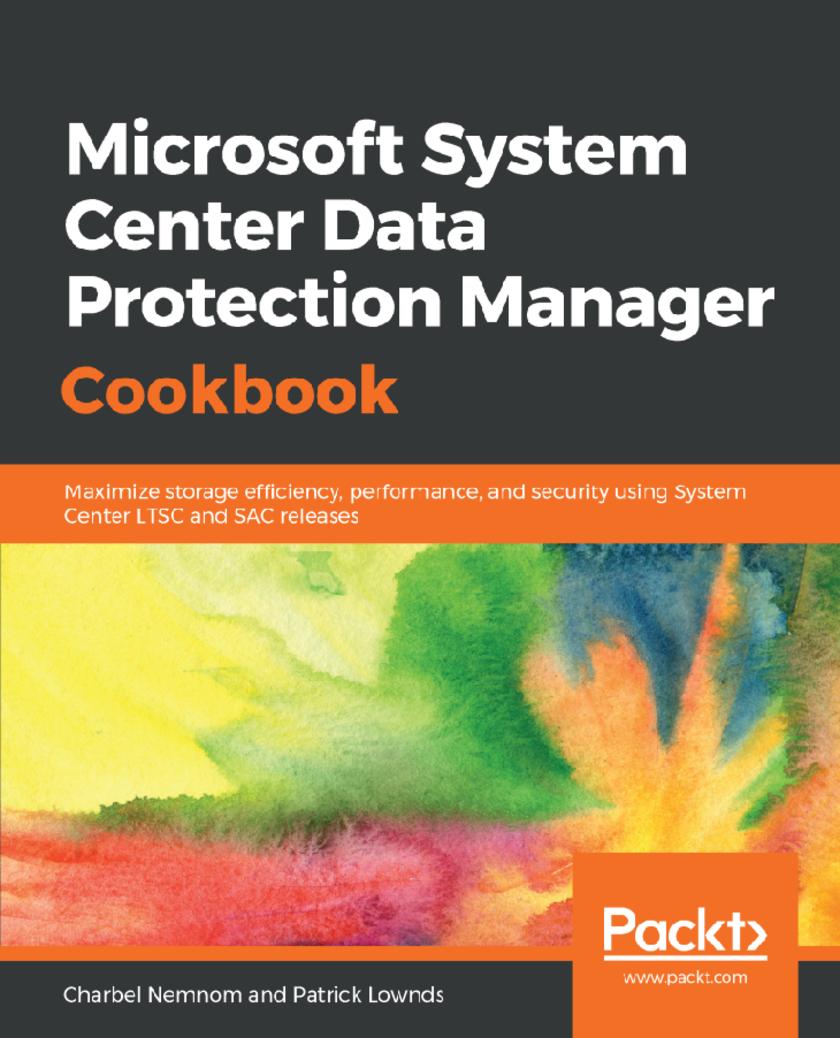
Microsoft System Center Data Protection Manager Cookbook
¥81.74
Over 60 recipes to achieve a robust and advanced backup and recovery solution leveraging SCDPM Key Features *Adapt to the modern data center design challenges and improve storage efficiency *Effective recipes to help you create your own robust architectural designs *Solve data protection and recovery problems in your organization Book Description System Center Data Protection Manager (SCDPM) is a robust enterprise backup and recovery system that contributes to your BCDR strategy by facilitating the backup and recovery of enterprise data. With an increase in data recovery and protection problems faced in organizations, it has become important to keep data safe and recoverable. This book contains recipes that will help you upgrade to SCDPM and it covers the advanced features and functionality of SCDPM. This book starts by helping you install SCDPM and then moves on to post-installation and management tasks. You will come across a lot of useful recipes that will help you recover your VMware and Hyper-V VMs. It will also walk you through tips for monitoring SCDPM in different scenarios. Next, the book will also offer insights into protecting windows workloads followed by best practices on SCDPM. You will also learn to back up your Azure Stack Infrastructure using Azure Backup. You will also learn about recovering data from backup and implementing disaster recovery. Finally, the book will show you how to configure the protection groups to enable online protection and troubleshoot Microsoft Azure Backup Agent. What you will learn *Install and prepare SQL Server for the SCDPM database *Reduce backup storage with SCDPM and data deduplication *Learn about the prerequisites for supported Hyper-V Server protection *Integrate SCDPM with other System Center products to build optimal services *Protect and restore the SCDPM database *Protect your data center by integrating SCDPM with Azure Backup *Manually create online recovery points and recover production data from Azure *Protect and learn about the requirements to recover Azure Stack with SCDPM Who this book is for If you are an SCDPM administrator, this book will help you verify your knowledge and provide you with everything you need to know about the new release of System Center Data Protection Manager.
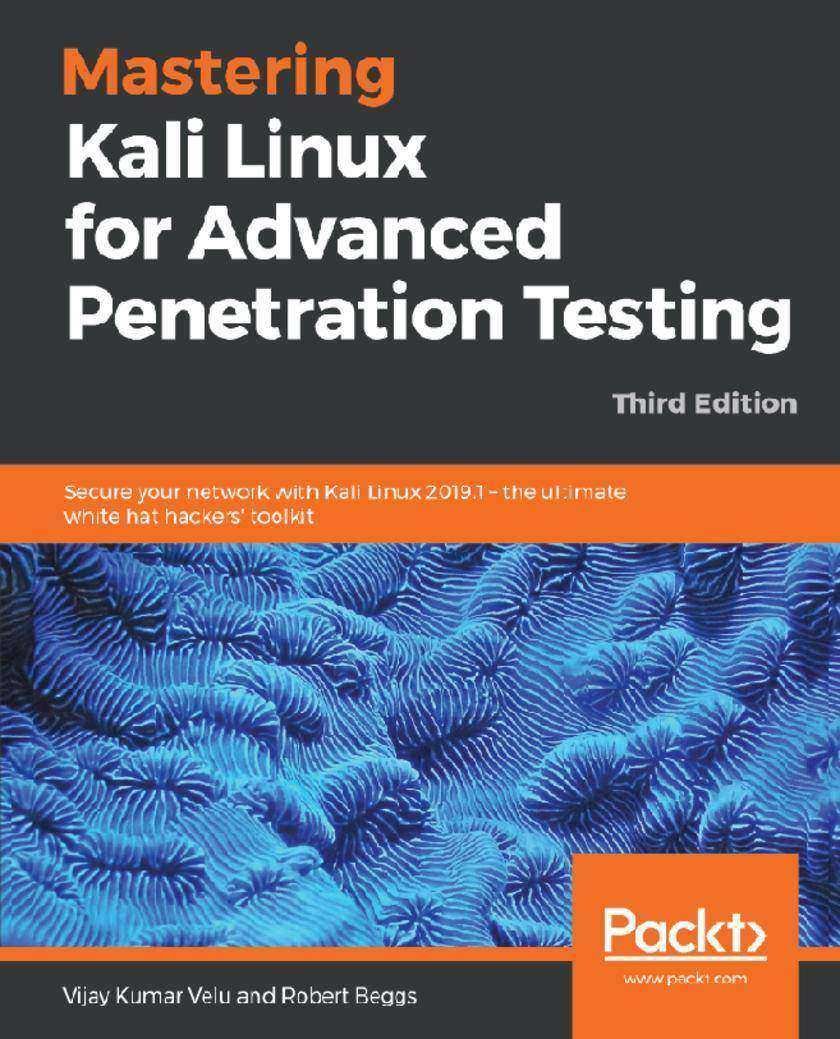
Mastering Kali Linux for Advanced Penetration Testing
¥90.46
A practical guide to testing your infrastructure security with Kali Linux, the preferred choice of pentesters and hackers Key Features * Employ advanced pentesting techniques with Kali Linux to build highly secured systems * Discover various stealth techniques to remain undetected and defeat modern infrastructures * Explore red teaming techniques to exploit secured environment Book Description This book takes you, as a tester or security practitioner, through the reconnaissance, vulnerability assessment, exploitation, privilege escalation, and post-exploitation activities used by pentesters. To start with, you'll use a laboratory environment to validate tools and techniques, along with an application that supports a collaborative approach for pentesting. You'll then progress to passive reconnaissance with open source intelligence and active reconnaissance of the external and internal infrastructure. You'll also focus on how to select, use, customize, and interpret the results from different vulnerability scanners, followed by examining specific routes to the target, which include bypassing physical security and the exfiltration of data using a variety of techniques. You'll discover concepts such as social engineering, attacking wireless networks, web services, and embedded devices. Once you are confident with these topics, you'll learn the practical aspects of attacking user client systems by backdooring with fileless techniques, followed by focusing on the most vulnerable part of the network – directly attacking the end user. By the end of this book, you'll have explored approaches for carrying out advanced pentesting in tightly secured environments, understood pentesting and hacking techniques employed on embedded peripheral devices. What you will learn * Configure the most effective Kali Linux tools to test infrastructure security * Employ stealth to avoid detection in the infrastructure being tested * Recognize when stealth attacks are being used against your infrastructure * Exploit networks and data systems using wired and wireless networks as well as web services * Identify and download valuable data from target systems * Maintain access to compromised systems * Use social engineering to compromise the weakest part of the network - the end users Who this book is for This third edition of Mastering Kali Linux for Advanced Penetration Testing is for you if you are a security analyst, pentester, ethical hacker, IT professional, or security consultant wanting to maximize the success of your infrastructure testing using some of the advanced features of Kali Linux. Prior exposure of penetration testing and ethical hacking basics will be helpful in making the most out of this book.
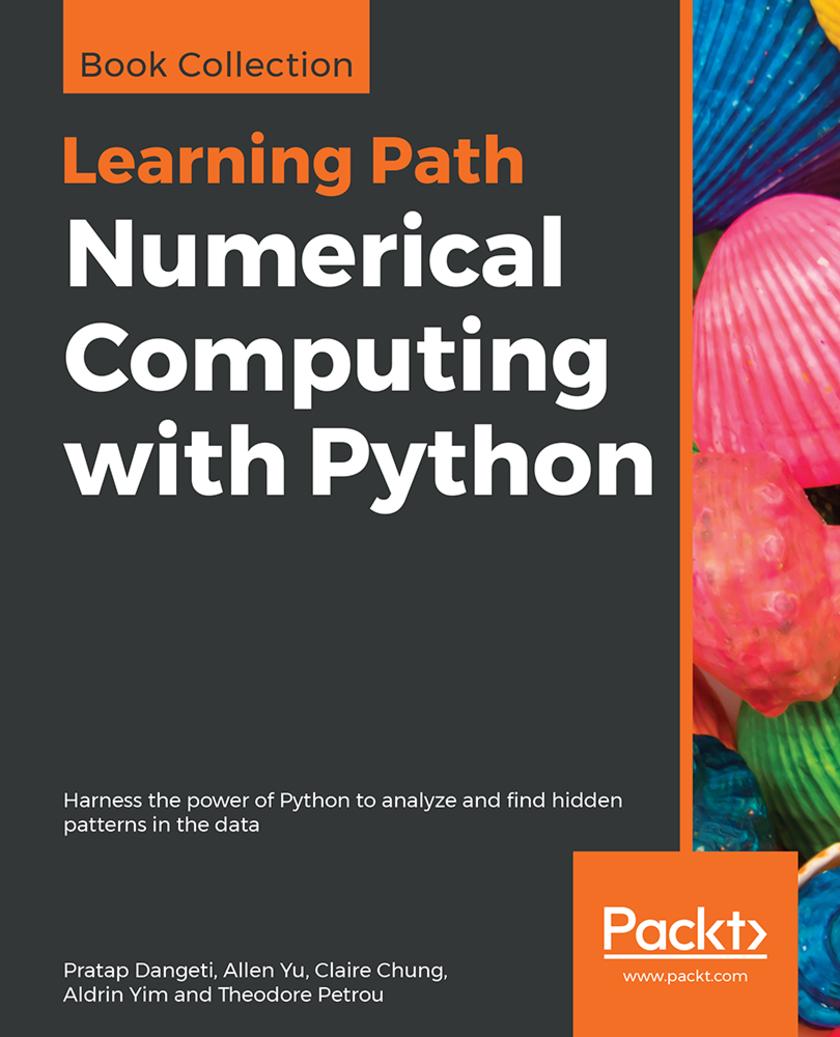
Numerical Computing with Python
¥90.46
Understand, explore, and effectively present data using the powerful data visualization techniques of Python Key Features *Use the power of Pandas and Matplotlib to easily solve data mining issues *Understand the basics of statistics to build powerful predictive data models *Grasp data mining concepts with helpful use-cases and examples Book Description Data mining, or parsing the data to extract useful insights, is a niche skill that can transform your career as a data scientist Python is a flexible programming language that is equipped with a strong suite of libraries and toolkits, and gives you the perfect platform to sift through your data and mine the insights you seek. This Learning Path is designed to familiarize you with the Python libraries and the underlying statistics that you need to get comfortable with data mining. You will learn how to use Pandas, Python's popular library to analyze different kinds of data, and leverage the power of Matplotlib to generate appealing and impressive visualizations for the insights you have derived. You will also explore different machine learning techniques and statistics that enable you to build powerful predictive models. By the end of this Learning Path, you will have the perfect foundation to take your data mining skills to the next level and set yourself on the path to become a sought-after data science professional. This Learning Path includes content from the following Packt products: *Statistics for Machine Learning by Pratap Dangeti *Matplotlib 2.x By Example by Allen Yu, Claire Chung, Aldrin Yim *Pandas Cookbook by Theodore Petrou What you will learn *Understand the statistical fundamentals to build data models *Split data into independent groups *Apply aggregations and transformations to each group *Create impressive data visualizations *Prepare your data and design models *Clean up data to ease data analysis and visualization *Create insightful visualizations with Matplotlib and Seaborn *Customize the model to suit your own predictive goals Who this book is for If you want to learn how to use the many libraries of Python to extract impactful information from your data and present it as engaging visuals, then this is the ideal Learning Path for you. Some basic knowledge of Python is enough to get started with this Learning Path.
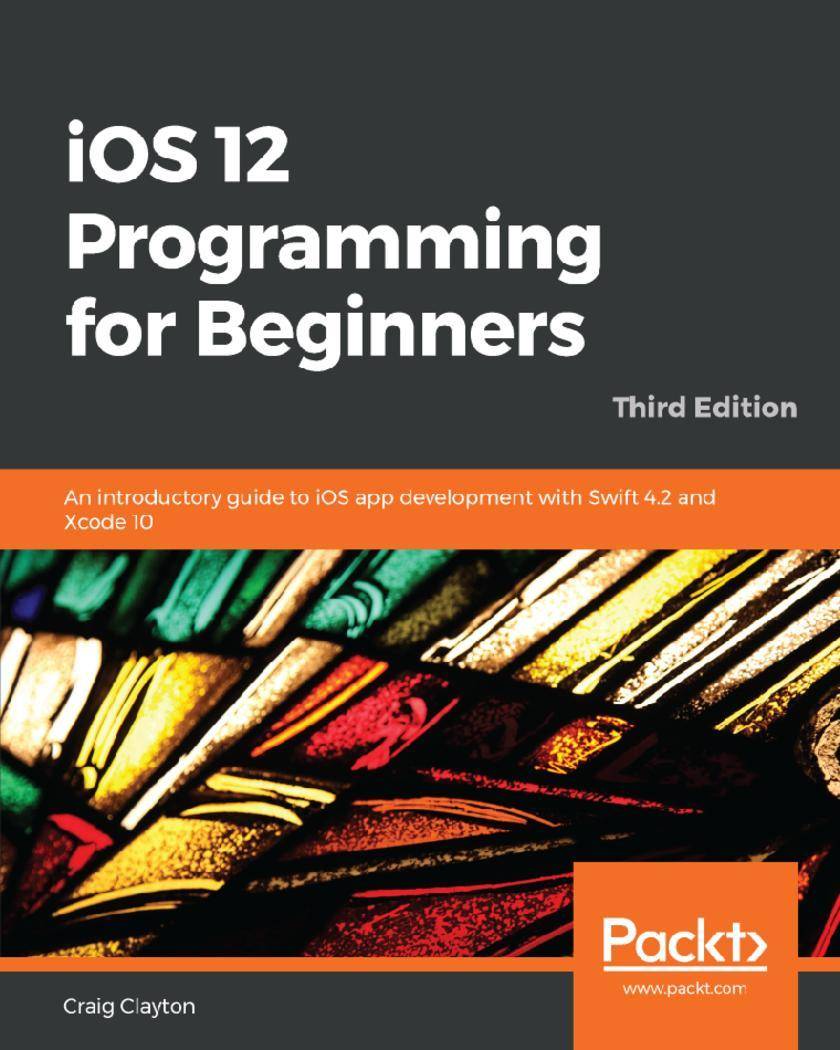
iOS 12 Programming for Beginners
¥81.74
Begin your iOS 12 app development journey with this practical guide Key Features *Kick-start your iOS programming career and have fun building iOS apps of your choice *Get to grips with Xcode 10 and Swift 4.2, the building blocks of iOS development *Discover the latest features of iOS 12 - SiriKit, notifications, and much more Book Description Want to build iOS 12 applications from scratch with the latest Swift 4.2 language and Xcode 10 by your side? Forget sifting through tutorials and blog posts; this book is a direct route to iOS development, taking you through the basics and showing you how to put principles into practice. Take advantage of this developer-friendly guide and start building applications that may just take the App Store by storm! If you’re already an experienced programmer, you can jump right in and learn the latest iOS 12 features. For beginners, this book starts by introducing you to iOS development as you learn Xcode and Swift. You'll also study advanced iOS design topics, such as gestures and animations, to give your app the edge. You’ll explore the latest Swift 4.2 and iOS 12 developments by incorporating new features, such as the latest in notifications, custom-UI notifications, maps, and the recent additions in Sirikit. The book will guide you in using TestFlight to quickly get to grips with everything you need to get your project on the App Store. By the end of this book, you'll be ready to start building your own cool iOS applications confidently. What you will learn *Explore the distinctive design principles that define the iOS user experience *Navigate panels within an Xcode project *Use the latest Xcode asset catalogue of Xcode 10 *Create a playgrounds project within your projects and understand how Ranges and Control flow work *Study operations with integers and work your way through if statements *Build a responsive UI and add privacy to your custom-rich notifications *Set up Sirikit to add voice for Siri shortcuts *Collect valuable feedback with TestFlight before releasing your apps on the App Store Who this book is for This book is for you if you are completely new to Swift, iOS, or programming and want to make iOS applications. However, you’ll also find this book useful if you’re an experienced programmer looking to explore the latest iOS 12 features.
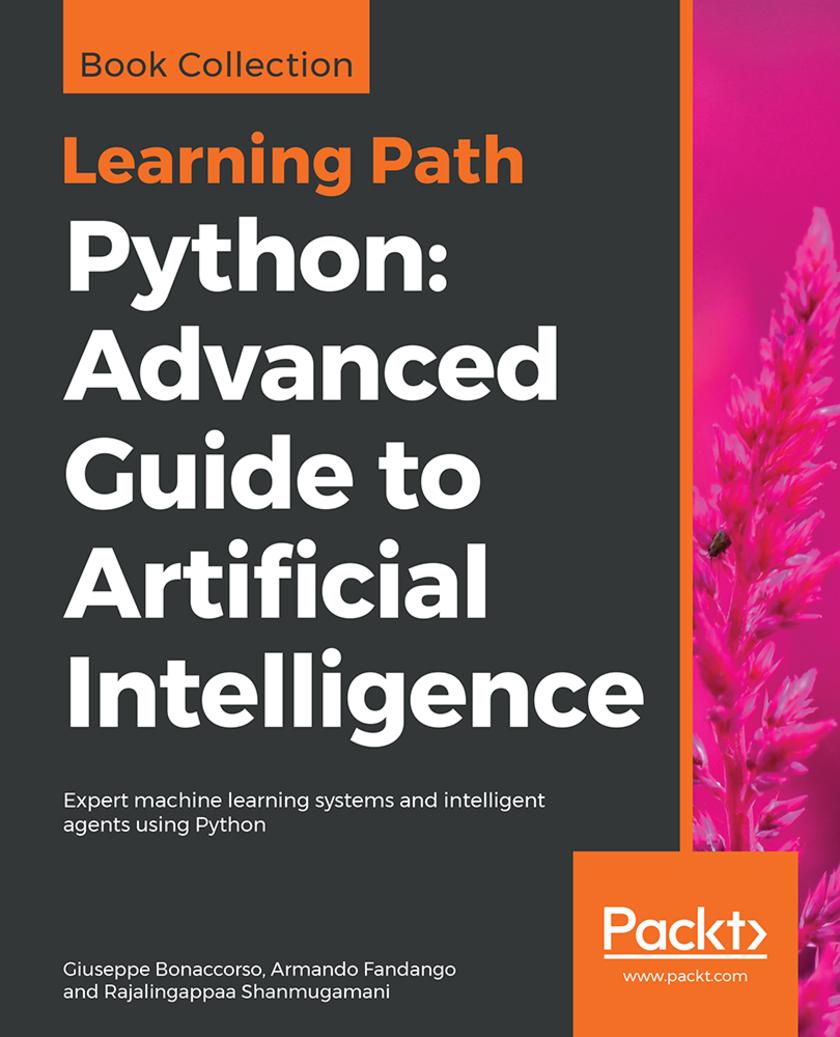
Python: Advanced Guide to Artificial Intelligence
¥90.46
Demystify the complexity of machine learning techniques and create evolving, clever solutions to solve your problems Key Features *Master supervised, unsupervised, and semi-supervised ML algorithms and their implementation *Build deep learning models for object detection, image classification, similarity learning, and more *Build, deploy, and scale end-to-end deep neural network models in a production environment Book Description This Learning Path is your complete guide to quickly getting to grips with popular machine learning algorithms. You'll be introduced to the most widely used algorithms in supervised, unsupervised, and semi-supervised machine learning, and learn how to use them in the best possible manner. Ranging from Bayesian models to the MCMC algorithm to Hidden Markov models, this Learning Path will teach you how to extract features from your dataset and perform dimensionality reduction by making use of Python-based libraries. You'll bring the use of TensorFlow and Keras to build deep learning models, using concepts such as transfer learning, generative adversarial networks, and deep reinforcement learning. Next, you'll learn the advanced features of TensorFlow1.x, such as distributed TensorFlow with TF clusters, deploy production models with TensorFlow Serving. You'll implement different techniques related to object classification, object detection, image segmentation, and more. By the end of this Learning Path, you'll have obtained in-depth knowledge of TensorFlow, making you the go-to person for solving artificial intelligence problems This Learning Path includes content from the following Packt products: *Mastering Machine Learning Algorithms by Giuseppe Bonaccorso *Mastering TensorFlow 1.x by Armando Fandango *Deep Learning for Computer Vision by Rajalingappaa Shanmugamani What you will learn *Explore how an ML model can be trained, optimized, and evaluated *Work with Autoencoders and Generative Adversarial Networks *Explore the most important Reinforcement Learning techniques *Build end-to-end deep learning (CNN, RNN, and Autoencoders) models Who this book is for This Learning Path is for data scientists, machine learning engineers, artificial intelligence engineers who want to delve into complex machine learning algorithms, calibrate models, and improve the predictions of the trained model. You will encounter the advanced intricacies and complex use cases of deep learning and AI. A basic knowledge of programming in Python and some understanding of machine learning concepts are required to get the best out of this Learning Path.
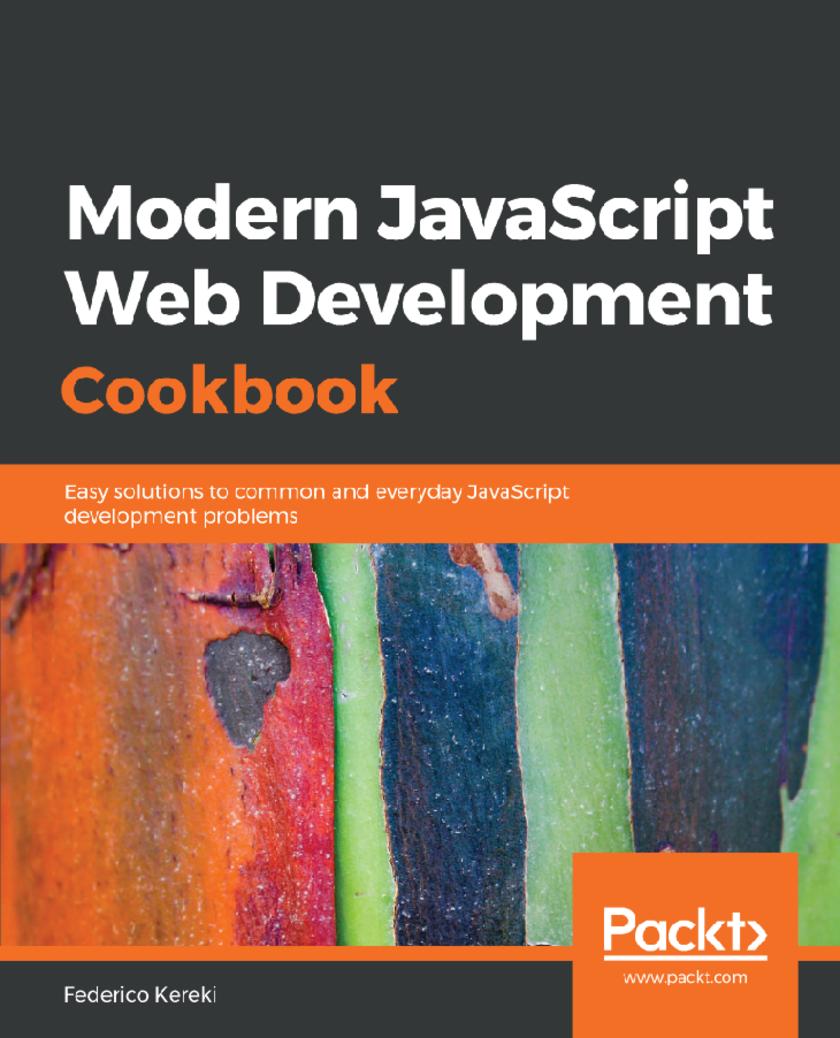
Modern JavaScript Web Development Cookbook
¥81.74
Over 90 recipes to help you write clean code, solve common JavaScript problems, and work on popular use cases like SPAs, microservices, native mobile development with Node, React, React Native and Electron. Key Features *Over 90 practical recipes to help you write clean and maintainable JavaScript codes with the latest ES8 *Leverage the power of leading web frameworks like Node and React to build modern web apps *Features comprehensive coverage of tools and techniques needed to create multi-platform apps with JavaScript Book Description JavaScript has evolved into a language that you can use on any platform. Modern JavaScript Web Development Cookbook is a perfect blend of solutions for traditional JavaScript development and modern areas that developers have lately been exploring with JavaScript. This comprehensive guide teaches you how to work with JavaScript on servers, browsers, mobile phones and desktops. You will start by exploring the new features of ES8. You will then move on to learning the use of ES8 on servers (with Node.js), with the objective of producing services and microservices and dealing with authentication and CORS. Once you get accustomed to ES8, you will learn to apply it to browsers using frameworks, such as React and Redux, which interact through Ajax with services. You will then understand the use of a modern framework to develop the UI. In addition to this, development for mobile devices with React Native will walk you through the benefits of creating native apps, both for Android and iOS. Finally, you’ll be able to apply your new-found knowledge of server-side and client-side tools to develop applications with Electron. What you will learn *Use the latest features of ES8 and learn new ways to code with JavaScript *Develop server-side services and microservices with Node.js *Learn to do unit testing and to debug your code *Build client-side web applications using React and Redux *Create native mobile applications for Android and iOS with React Native *Write desktop applications with Electron Who this book is for This book is for developers who want to explore the latest JavaScript features, frameworks, and tools for building complete mobile, desktop and web apps, including server and client-side code. You are expected to have working knowledge of JavaScript to get the most out of this book.
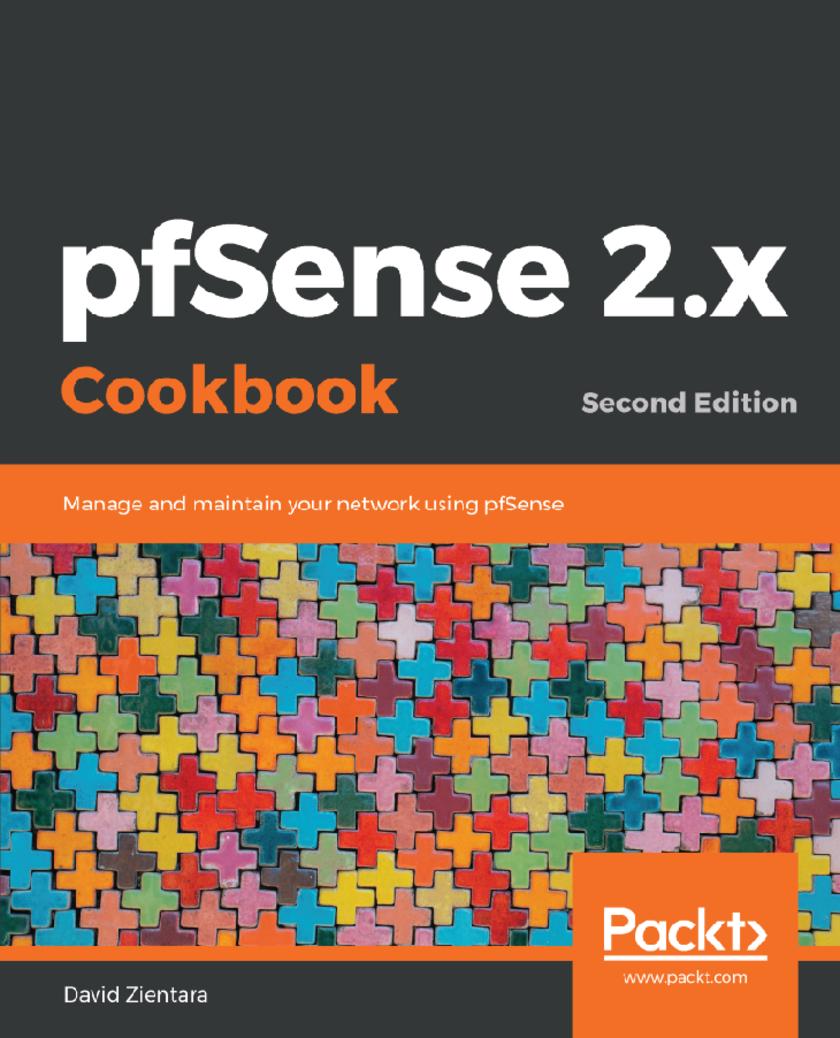
pfSense 2.x Cookbook
¥81.74
A practical, example-driven guide to configuring even the most advanced features of pfSense 2.x Key Features *Build a high-availability fault-tolerant security system with pfSense 2.x *Leverage the latest version of pfSense to secure your cloud environment *A recipe-based guide that will help you enhance your on-premise and cloud security principles Book Description pfSense is an open source distribution of the FreeBSD-based firewall that provides a platform for ?exible and powerful routing and firewalling. The versatility of pfSense presents us with a wide array of configuration options, which makes determining requirements a little more difficult and a lot more important compared to other offerings. pfSense 2.x Cookbook – Second Edition starts by providing you with an understanding of how to complete the basic steps needed to render a pfSense firewall operational. It starts by showing you how to set up different forms of NAT entries and firewall rules and use aliases and scheduling in firewall rules. Moving on, you will learn how to implement a captive portal set up in different ways (no authentication, user manager authentication, and RADIUS authentication), as well as NTP and SNMP configuration. You will then learn how to set up a VPN tunnel with pfSense. The book then focuses on setting up traffic shaping with pfSense, using either the built-in traffic shaping wizard, custom ?oating rules, or Snort. Toward the end, you will set up multiple WAN interfaces, load balancing and failover groups, and a CARP failover group. You will also learn how to bridge interfaces, add static routing entries, and use dynamic routing protocols via third-party packages. What you will learn *Configure the essential pfSense services (namely, DHCP, DNS, and DDNS) *Create aliases, firewall rules, NAT port-forward rules, and rule schedules *Create multiple WAN interfaces in load-balanced or failover configurations *Configure firewall redundancy with a CARP firewall failover *Configure backup/restoration and automatic configuration-file backup *Configure some services and perform diagnostics with command-line utilities Who this book is for This book is intended for all levels of network administrators. If you are an advanced user of pfSense, then you can flip to a particular recipe and quickly accomplish the task at hand; if you are new to pfSense, on the other hand, you can work through the book chapter by chapter and learn all of the features of the system from the ground up.
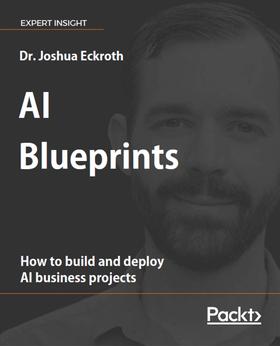
AI Blueprints
¥71.93
The essential blueprints and workflow you need to build successful AI business applications Key Features *Learn and master the essential blueprints to program AI for real-world business applications *Gain insights into how modern AI and machine learning solve core business challenges *Acquire practical techniques and a workflow that can build AI applications using state-of-the-art software libraries *Work with a practical, code-based strategy for creating successful AI solutions in your business Book Description AI Blueprints gives you a working framework and the techniques to build your own successful AI business applications. You’ll learn across six business scenarios how AI can solve critical challenges with state-of-the-art AI software libraries and a well thought out workflow. Along the way you’ll discover the practical techniques to build AI business applications from first design to full coding and deployment. The AI blueprints in this book solve key business scenarios. The first blueprint uses AI to find solutions for building plans for cloud computing that are on-time and under budget. The second blueprint involves an AI system that continuously monitors social media to gauge public feeling about a topic of interest - such as self-driving cars. You’ll learn how to approach AI business problems and apply blueprints that can ensure success. The next AI scenario shows you how to approach the problem of creating a recommendation engine and monitoring how those recommendations perform. The fourth blueprint shows you how to use deep learning to find your business logo in social media photos and assess how people interact with your products. Learn the practical techniques involved and how to apply these blueprints intelligently. The fifth blueprint is about how to best design a ‘trending now’ section on your website, much like the one we know from Twitter. The sixth blueprint shows how to create helpful chatbots so that an AI system can understand customers’ questions and answer them with relevant responses. This book continuously demonstrates a working framework and strategy for building AI business applications. Along the way, you’ll also learn how to prepare for future advances in AI. You’ll gain a workflow and a toolbox of patterns and techniques so that you can create your own smart code. What you will learn *An essential toolbox of blueprints and advanced techniques for building AI business applications *How to design and deploy AI applications that meet today’s business needs *A workflow from first design stages to practical code solutions in your next AI projects *Solutions for AI projects that involve social media analytics and recommendation engines *Practical projects and techniques for sentiment analysis and helpful chatbots *A blueprint for AI projects that recommend products based on customer purchasing habits *How to prepare yourself for the next decade of AI and machine learning advancements Who this book is for Programming AI Business Applications provides an introduction to AI with real-world examples. This book can be read and understood by programmers and students without requiring previous AI experience. The projects in this book make use of Java and Python and several popular and state-of-the-art opensource AI libraries.
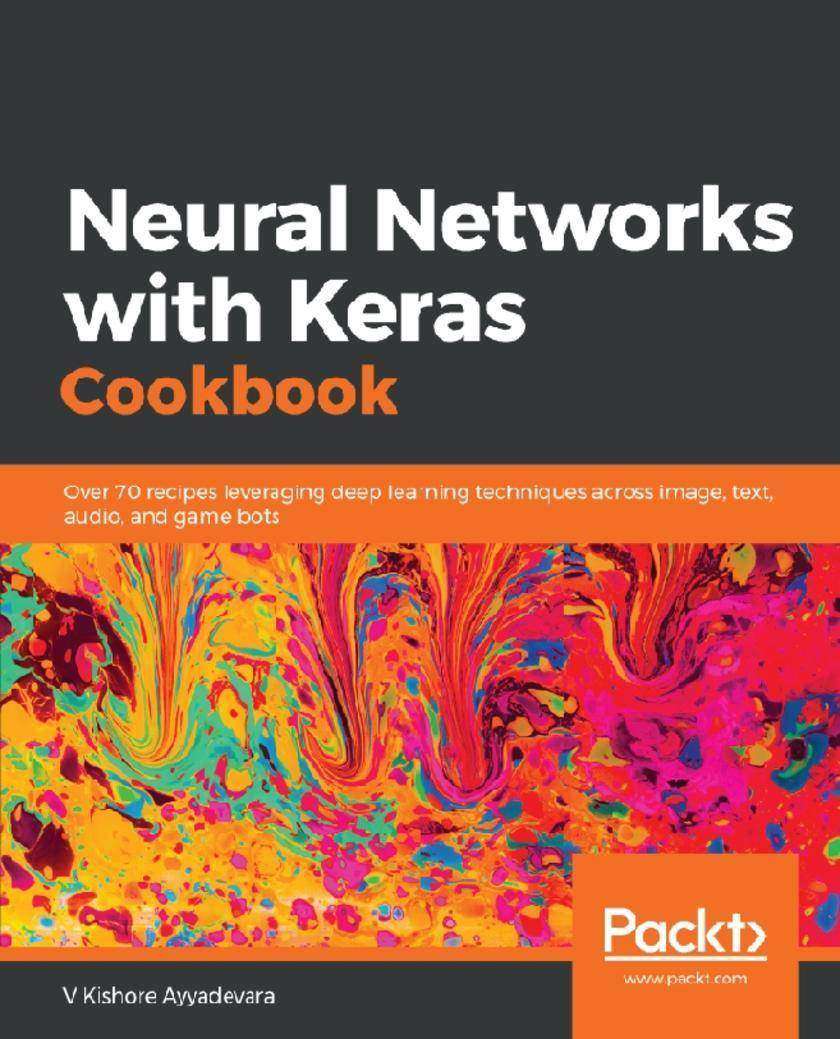
Neural Networks with Keras Cookbook
¥73.02
Implement neural network architectures by building them from scratch for multiple real-world applications. Key Features * From scratch, build multiple neural network architectures such as CNN, RNN, LSTM in Keras * Discover tips and tricks for designing a robust neural network to solve real-world problems * Graduate from understanding the working details of neural networks and master the art of fine-tuning them Book Description This book will take you from the basics of neural networks to advanced implementations of architectures using a recipe-based approach. We will learn about how neural networks work and the impact of various hyper parameters on a network's accuracy along with leveraging neural networks for structured and unstructured data. Later, we will learn how to classify and detect objects in images. We will also learn to use transfer learning for multiple applications, including a self-driving car using Convolutional Neural Networks. We will generate images while leveraging GANs and also by performing image encoding. Additionally, we will perform text analysis using word vector based techniques. Later, we will use Recurrent Neural Networks and LSTM to implement chatbot and Machine Translation systems. Finally, you will learn about transcribing images, audio, and generating captions and also use Deep Q-learning to build an agent that plays Space Invaders game. By the end of this book, you will have developed the skills to choose and customize multiple neural network architectures for various deep learning problems you might encounter. What you will learn * Build multiple advanced neural network architectures from scratch * Explore transfer learning to perform object detection and classification * Build self-driving car applications using instance and semantic segmentation * Understand data encoding for image, text and recommender systems * Implement text analysis using sequence-to-sequence learning * Leverage a combination of CNN and RNN to perform end-to-end learning * Build agents to play games using deep Q-learning Who this book is for This intermediate-level book targets beginners and intermediate-level machine learning practitioners and data scientists who have just started their journey with neural networks. This book is for those who are looking for resources to help them navigate through the various neural network architectures; you'll build multiple architectures, with concomitant case studies ordered by the complexity of the problem. A basic understanding of Python programming and a familiarity with basic machine learning are all you need to get started with this book.
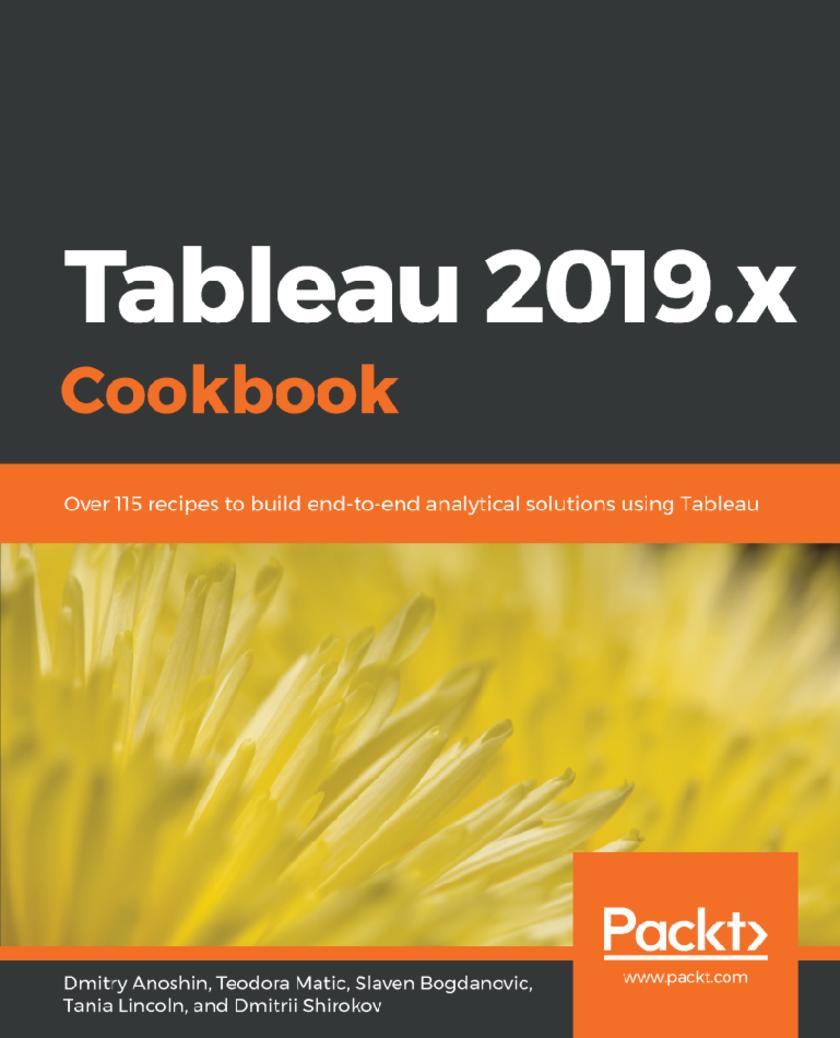
Tableau 2019.x Cookbook
¥90.46
Perform advanced dashboard, visualization, and analytical techniques with Tableau Desktop, Tableau Prep, and Tableau Server Key Features * Unique problem-solution approach to aid effective business decision-making * Create interactive dashboards and implement powerful business intelligence solutions * Includes best practices on using Tableau with modern cloud analytics services Book Description Tableau has been one of the most popular business intelligence solutions in recent times, thanks to its powerful and interactive data visualization capabilities. Tableau 2019.x Cookbook is full of useful recipes from industry experts, who will help you master Tableau skills and learn each aspect of Tableau's ecosystem. This book is enriched with features such as Tableau extracts, Tableau advanced calculations, geospatial analysis, and building dashboards. It will guide you with exciting data manipulation, storytelling, advanced filtering, expert visualization, and forecasting techniques using real-world examples. From basic functionalities of Tableau to complex deployment on Linux, you will cover it all. Moreover, you will learn advanced features of Tableau using R, Python, and various APIs. You will learn how to prepare data for analysis using the latest Tableau Prep. In the concluding chapters, you will learn how Tableau fits the modern world of analytics and works with modern data platforms such as Snowflake and Redshift. In addition, you will learn about the best practices of integrating Tableau with ETL using Matillion ETL. By the end of the book, you will be ready to tackle business intelligence challenges using Tableau's features. What you will learn * Understand the basic and advanced skills of Tableau Desktop * Implement best practices of visualization, dashboard, and storytelling * Learn advanced analytics with the use of build in statistics * Deploy the multi-node server on Linux and Windows * Use Tableau with big data sources such as Hadoop, Athena, and Spectrum * Cover Tableau built-in functions for forecasting using R packages * Combine, shape, and clean data for analysis using Tableau Prep * Extend Tableau’s functionalities with REST API and R/Python Who this book is for Tableau 2019.x Cookbook is for data analysts, data engineers, BI developers, and users who are looking for quick solutions to common and not-so-common problems faced while using Tableau products. Put each recipe into practice by bringing the latest offerings of Tableau 2019.x to solve real-world analytics and business intelligence challenges. Some understanding of BI concepts and Tableau is required.

Becoming the Hacker
¥73.02
Web penetration testing by becoming an ethical hacker. Protect the web by learning the tools, and the tricks of the web application attacker. Key Features * Builds on books and courses on penetration testing for beginners * Covers both attack and defense perspectives * Examines which tool to deploy to suit different applications and situations Book Description Becoming the Hacker will teach you how to approach web penetration testing with an attacker's mindset. While testing web applications for performance is common, the ever-changing threat landscape makes security testing much more difficult for the defender. There are many web application tools that claim to provide a complete survey and defense against potential threats, but they must be analyzed in line with the security needs of each web application or service. We must understand how an attacker approaches a web application and the implications of breaching its defenses. Through the first part of the book, Adrian Pruteanu walks you through commonly encountered vulnerabilities and how to take advantage of them to achieve your goal. The latter part of the book shifts gears and puts the newly learned techniques into practice, going over scenarios where the target may be a popular content management system or a containerized application and its network. Becoming the Hacker is a clear guide to web application security from an attacker's point of view, from which both sides can benefit. What you will learn * Study the mindset of an attacker * Adopt defensive strategies * Classify and plan for standard web application security threats * Prepare to combat standard system security problems * Defend WordPress and mobile applications * Use security tools and plan for defense against remote execution Who this book is for The reader should have basic security experience, for example, through running a network or encountering security issues during application development. Formal education in security is useful, but not required. This title is suitable for people with at least two years of experience in development, network management, or DevOps, or with an established interest in security.
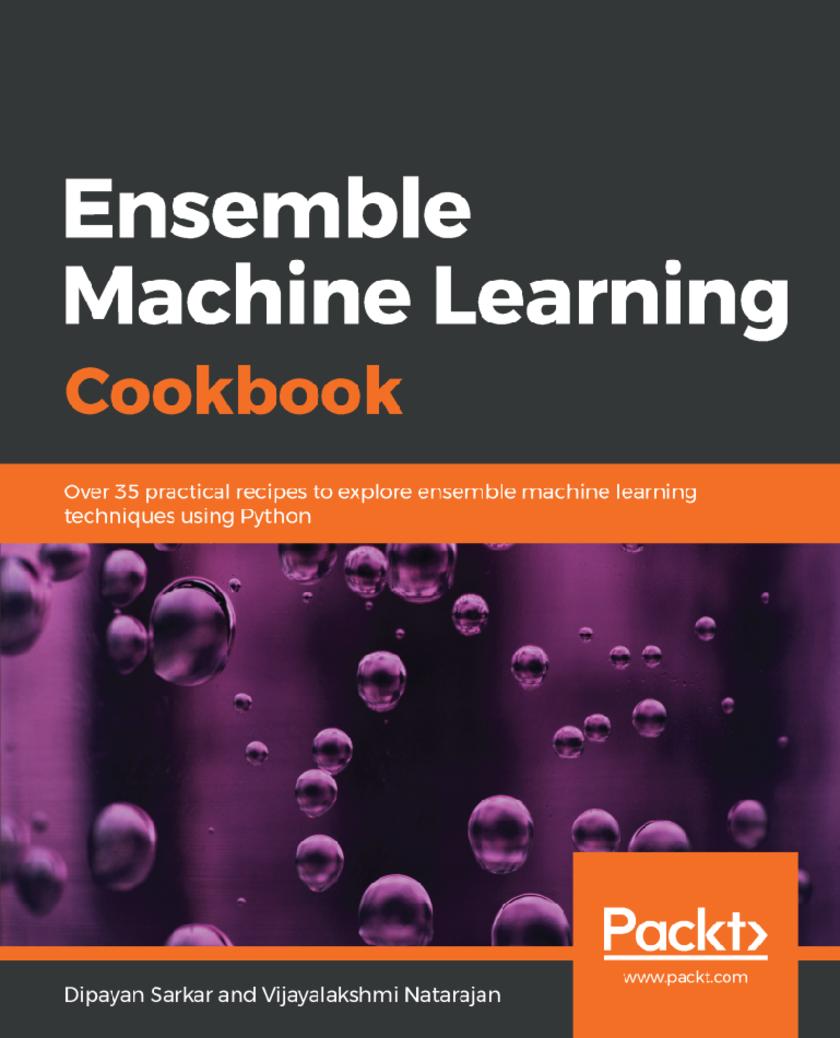
Ensemble Machine Learning Cookbook
¥81.74
Implement machine learning algorithms to build ensemble models using Keras, H2O, Scikit-Learn, Pandas and more Key Features * Apply popular machine learning algorithms using a recipe-based approach * Implement boosting, bagging, and stacking ensemble methods to improve machine learning models * Discover real-world ensemble applications and encounter complex challenges in Kaggle competitions Book Description Ensemble modeling is an approach used to improve the performance of machine learning models. It combines two or more similar or dissimilar machine learning algorithms to deliver superior intellectual powers. This book will help you to implement popular machine learning algorithms to cover different paradigms of ensemble machine learning such as boosting, bagging, and stacking. The Ensemble Machine Learning Cookbook will start by getting you acquainted with the basics of ensemble techniques and exploratory data analysis. You'll then learn to implement tasks related to statistical and machine learning algorithms to understand the ensemble of multiple heterogeneous algorithms. It will also ensure that you don't miss out on key topics, such as like resampling methods. As you progress, you’ll get a better understanding of bagging, boosting, stacking, and working with the Random Forest algorithm using real-world examples. The book will highlight how these ensemble methods use multiple models to improve machine learning results, as compared to a single model. In the concluding chapters, you'll delve into advanced ensemble models using neural networks, natural language processing, and more. You’ll also be able to implement models such as fraud detection, text categorization, and sentiment analysis. By the end of this book, you'll be able to harness ensemble techniques and the working mechanisms of machine learning algorithms to build intelligent models using individual recipes. What you will learn * Understand how to use machine learning algorithms for regression and classification problems * Implement ensemble techniques such as averaging, weighted averaging, and max-voting * Get to grips with advanced ensemble methods, such as bootstrapping, bagging, and stacking * Use Random Forest for tasks such as classification and regression * Implement an ensemble of homogeneous and heterogeneous machine learning algorithms * Learn and implement various boosting techniques, such as AdaBoost, Gradient Boosting Machine, and XGBoost Who this book is for This book is designed for data scientists, machine learning developers, and deep learning enthusiasts who want to delve into machine learning algorithms to build powerful ensemble models. Working knowledge of Python programming and basic statistics is a must to help you grasp the concepts in the book.
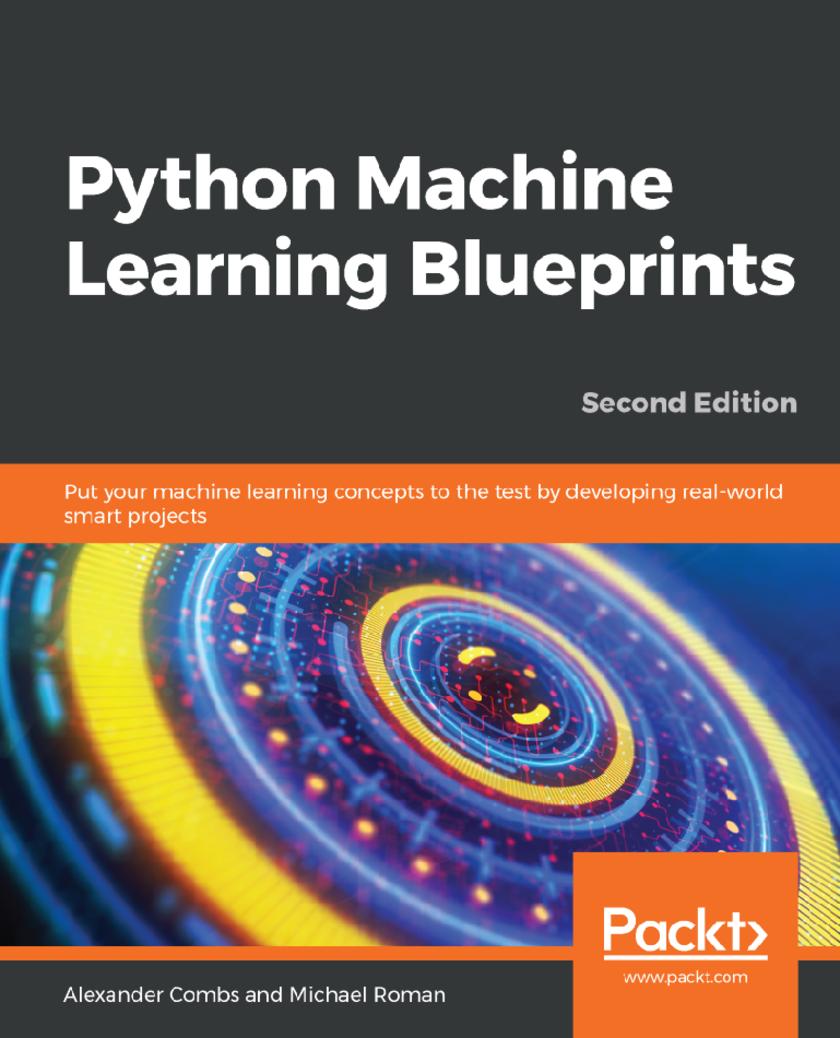
Python Machine Learning Blueprints
¥81.74
Discover a project-based approach to mastering machine learning concepts by applying them to everyday problems using libraries such as scikit-learn, TensorFlow, and Keras Key Features * Get to grips with Python's machine learning libraries including scikit-learn, TensorFlow, and Keras * Implement advanced concepts and popular machine learning algorithms in real-world projects * Build analytics, computer vision, and neural network projects Book Description Machine learning is transforming the way we understand and interact with the world around us. This book is the perfect guide for you to put your knowledge and skills into practice and use the Python ecosystem to cover key domains in machine learning. This second edition covers a range of libraries from the Python ecosystem, including TensorFlow and Keras, to help you implement real-world machine learning projects. The book begins by giving you an overview of machine learning with Python. With the help of complex datasets and optimized techniques, you’ll go on to understand how to apply advanced concepts and popular machine learning algorithms to real-world projects. Next, you’ll cover projects from domains such as predictive analytics to analyze the stock market and recommendation systems for GitHub repositories. In addition to this, you’ll also work on projects from the NLP domain to create a custom news feed using frameworks such as scikit-learn, TensorFlow, and Keras. Following this, you’ll learn how to build an advanced chatbot, and scale things up using PySpark. In the concluding chapters, you can look forward to exciting insights into deep learning and you'll even create an application using computer vision and neural networks. By the end of this book, you’ll be able to analyze data seamlessly and make a powerful impact through your projects. What you will learn * Understand the Python data science stack and commonly used algorithms * Build a model to forecast the performance of an Initial Public Offering (IPO) over an initial discrete trading window * Understand NLP concepts by creating a custom news feed * Create applications that will recommend GitHub repositories based on ones you’ve starred, watched, or forked * Gain the skills to build a chatbot from scratch using PySpark * Develop a market-prediction app using stock data * Delve into advanced concepts such as computer vision, neural networks, and deep learning Who this book is for This book is for machine learning practitioners, data scientists, and deep learning enthusiasts who want to take their machine learning skills to the next level by building real-world projects. The intermediate-level guide will help you to implement libraries from the Python ecosystem to build a variety of projects addressing various machine learning domains. Knowledge of Python programming and machine learning concepts will be helpful.
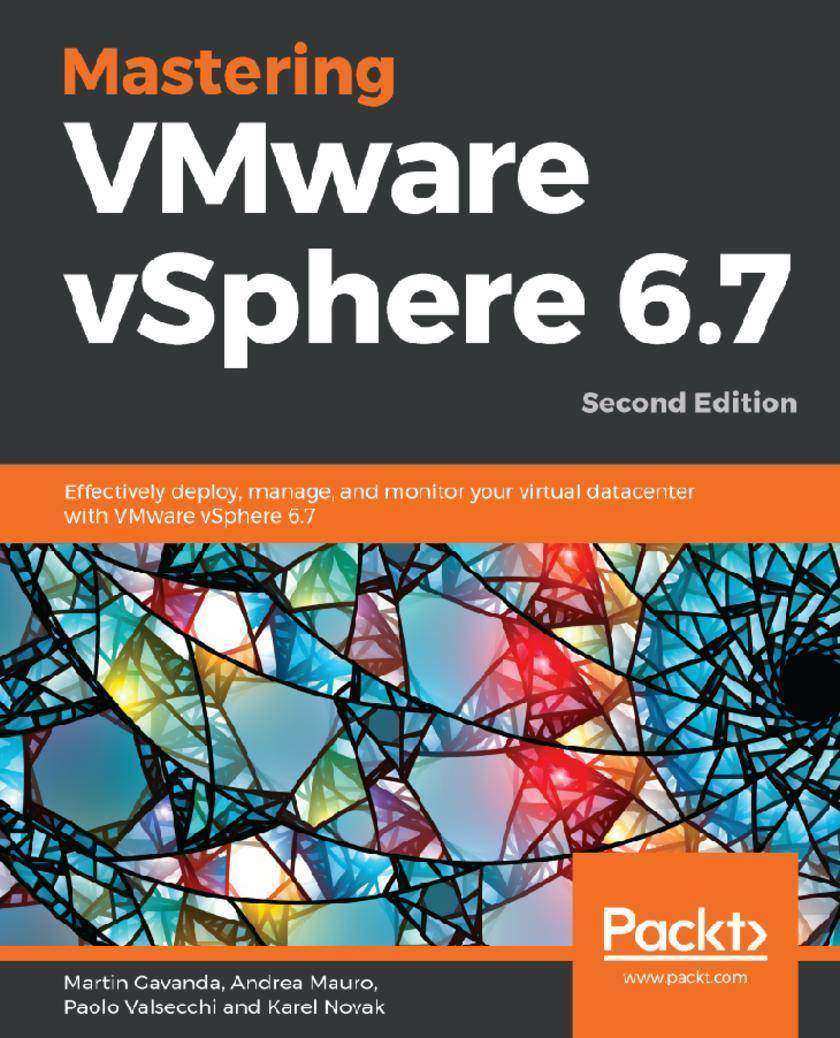
Mastering VMware vSphere 6.7
¥73.02
Unleash the benefits of VMware vSphere 6.7 to provide a powerful, flexible and secure digital infrastructure Key Features * Deep dive into areas like management, security, scalability, availability and more with vSphere 6.7 * Design, deploy and manage VMware vSphere virtual datacenters * Implement monitoring and security of VMware workloads with ease Book Description vSphere 6.7 is the latest release of VMware’s industry-leading, virtual cloud platform. It allows organisations to move to hybrid cloud computing by enabling them to run, manage, connect and secure applications in a common operating environment. This up-to-date, 2nd edition provides complete coverage of vSphere 6.7. Complete with step-by-step explanations of essential concepts, practical examples and self-assessment questions, you will begin with an overview of the products, solutions and features of the vSphere 6.7 suite. You’ll learn how to design and plan a virtual infrastructure and look at the workflow and installation of components. You'll gain insight into best practice configuration, management and security. By the end the book you'll be able to build your own VMware vSphere lab that can run even the most demanding of workloads. What you will learn * Explore the immense functionality of vSphere 6.7 * Design, manage and administer a virtualization environment * Get tips for the VCP6-DCV and VCIX6-DCV exams * Understand how to implement different migration techniques across different environments * Explore vSphere 6.7s powerful capabilities for patching, upgrading and managing the configuration of virtual environments. * Understand core vSphere components * Master resource management, disaster recovery, troubleshooting, monitoring and security Who this book is for This book is for Administrators, Infrastructure Engineers, Architects, and Consultants with basic knowledge of VMware vSphere.
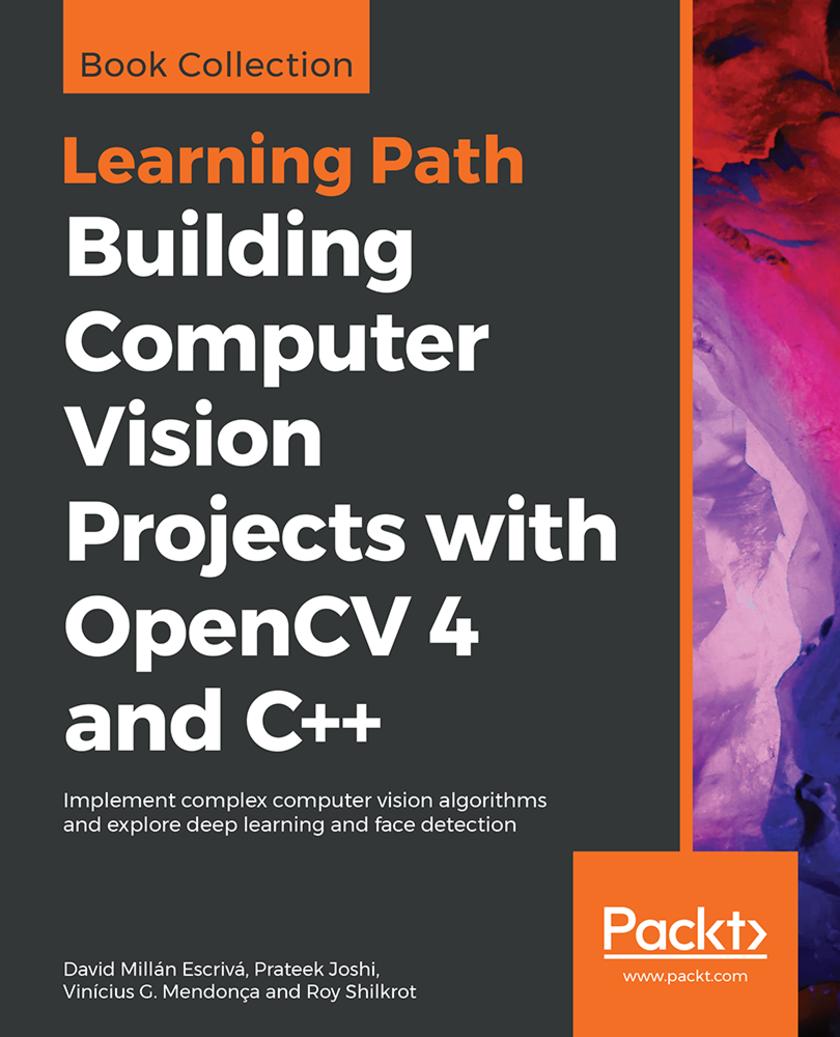
Building Computer Vision Projects with OpenCV 4 and C++
¥90.46
Delve into practical computer vision and image processing projects and get up to speed with advanced object detection techniques and machine learning algorithms Key Features * Discover best practices for engineering and maintaining OpenCV projects * Explore important deep learning tools for image classification * Understand basic image matrix formats and filters Book Description OpenCV is one of the best open source libraries available and can help you focus on constructing complete projects on image processing, motion detection, and image segmentation. This Learning Path is your guide to understanding OpenCV concepts and algorithms through real-world examples and activities. Through various projects, you'll also discover how to use complex computer vision and machine learning algorithms and face detection to extract the maximum amount of information from images and videos. In later chapters, you'll learn to enhance your videos and images with optical flow analysis and background subtraction. Sections in the Learning Path will help you get to grips with text segmentation and recognition, in addition to guiding you through the basics of the new and improved deep learning modules. By the end of this Learning Path, you will have mastered commonly used computer vision techniques to build OpenCV projects from scratch. This Learning Path includes content from the following Packt books: * Mastering OpenCV 4 - Third Edition by Roy Shilkrot and David Millán Escrivá * Learn OpenCV 4 By Building Projects - Second Edition by David Millán Escrivá, Vinícius G. Mendon?a, and Prateek Joshi What you will learn * Stay up-to-date with algorithmic design approaches for complex computer vision tasks * Work with OpenCV's most up-to-date API through various projects * Understand 3D scene reconstruction and Structure from Motion (SfM) * Study camera calibration and overlay augmented reality (AR) using the ArUco module * Create CMake scripts to compile your C++ application * Explore segmentation and feature extraction techniques * Remove backgrounds from static scenes to identify moving objects for surveillance * Work with new OpenCV functions to detect and recognize text with Tesseract Who this book is for If you are a software developer with a basic understanding of computer vision and image processing and want to develop interesting computer vision applications with OpenCV, this Learning Path is for you. Prior knowledge of C++ and familiarity with mathematical concepts will help you better understand the concepts in this Learning Path.
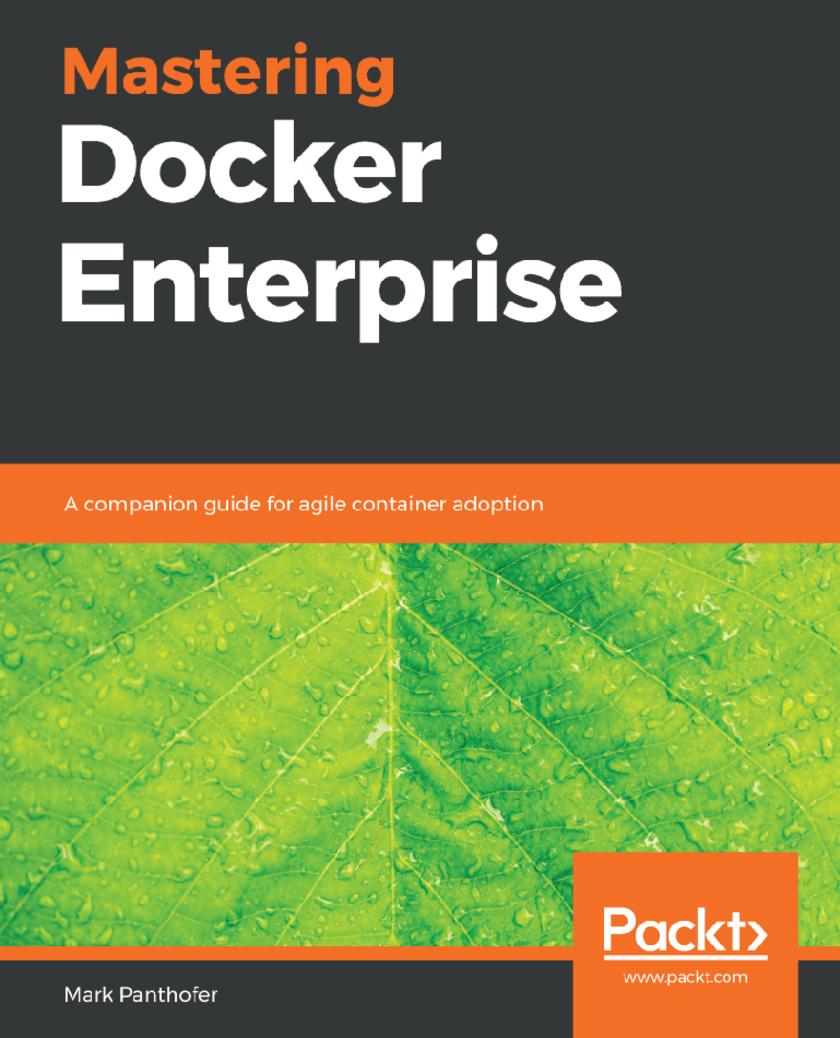
Mastering Docker Enterprise
¥90.46
A journey toward containerized applications in production with a cloud-portable, secure, robust and highly available Docker Enterprise platform. Key Features * Get an insider’s view into the container movement and Docker Enterprise * Manage the transformation associated with enterprise container adoption * Walk through the enterprise container adoption journey Book Description While known mostly as the open source engine behind tens of millions of server nodes, Docker also offers commercially supported enterprise tooling known as the Docker Enterprise. This platform leverages the deep roots from Docker Engine - Community (formerly Docker CE) and Kubernetes, but adds support and tooling to efficiently operate a secure container platform at scale. With hundreds of enterprises on board, best practices and adoption patterns are emerging rapidly. These learning points can be used to inform adopters and help manage the enterprise transformation associated with enterprise container adoption. This book starts by explaining the case for Docker Enterprise, as well as its structure and reference architecture. From there, we progress through the PoC,pilot and production stages as a working model for adoption, evolving the platform’s design and configuration for each stage and using detailed application examples along the way to clarify and demonstrate important concepts.The book concludes with Docker’s impact on other emerging software technologies, such as Blockchain and Serverless computing. By the end of this book, you’ll have a better understanding of what it takes to get your enterprise up and running with Docker Enterprise and beyond. What you will learn * Understand why containers are important to an enterprise * Understand the features and components of Docker Enterprise 2 * Find out about the PoC, pilot, and production adoption phases * Get to know the best practices for installing and operating Docker Enterprise * Understand what is important for a Docker Enterprise in production * Run Kubernetes on Docker Enterprise Who this book is for This book is for Software Architects, DevOps Engineers, Tech Ops, Docker professionals, or any IT professional working with Docker and containers who wants to move containerized workloads to production. This book discusses the enterprise adoption of Docker and Kubernetes,therefore a basic understanding of Docker concepts will be helpful.
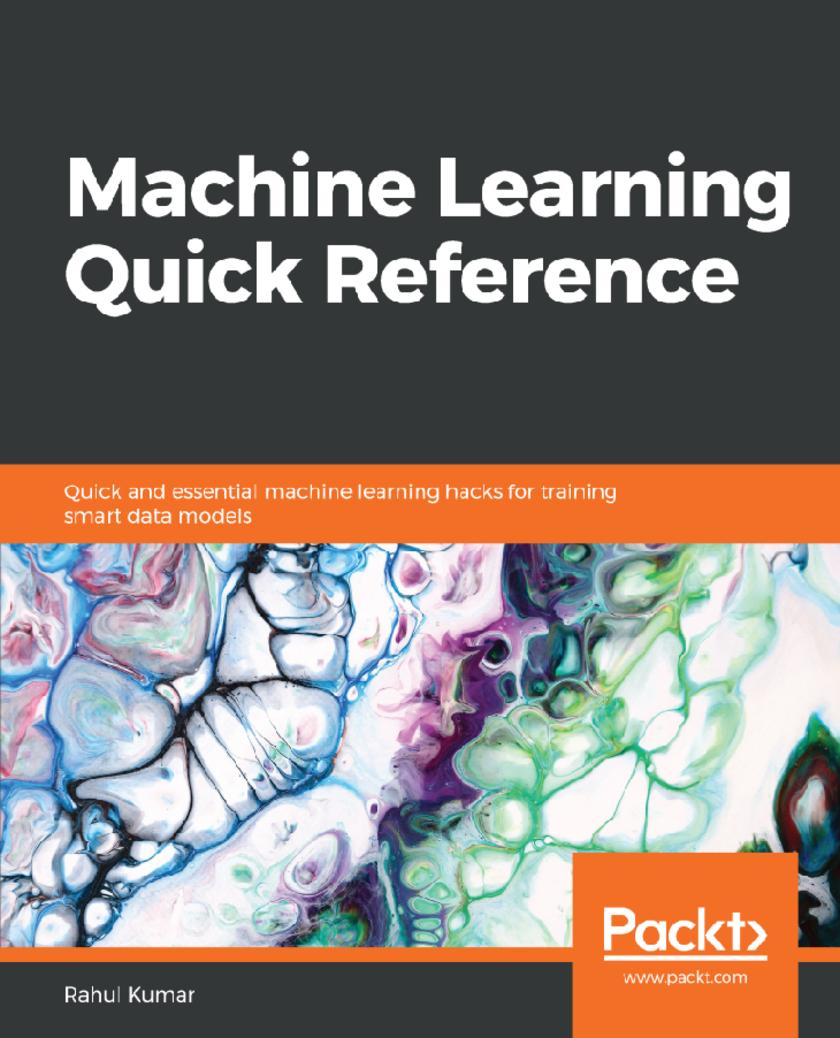
Machine Learning Quick Reference
¥54.49
Your hands-on reference guide to developing, training, and optimizing your machine learning models Key Features * Your guide to learning efficient machine learning processes from scratch * Explore expert techniques and hacks for a variety of machine learning concepts * Write effective code in R, Python, Scala, and Spark to solve all your machine learning problems Book Description Machine learning makes it possible to learn about the unknowns and gain hidden insights into your datasets by mastering many tools and techniques. This book guides you to do just that in a very compact manner. After giving a quick overview of what machine learning is all about, Machine Learning Quick Reference jumps right into its core algorithms and demonstrates how they can be applied to real-world scenarios. From model evaluation to optimizing their performance, this book will introduce you to the best practices in machine learning. Furthermore, you will also look at the more advanced aspects such as training neural networks and work with different kinds of data, such as text, time-series, and sequential data. Advanced methods and techniques such as causal inference, deep Gaussian processes, and more are also covered. By the end of this book, you will be able to train fast, accurate machine learning models at your fingertips, which you can easily use as a point of reference. What you will learn * Get a quick rundown of model selection, statistical modeling, and cross-validation * Choose the best machine learning algorithm to solve your problem * Explore kernel learning, neural networks, and time-series analysis * Train deep learning models and optimize them for maximum performance * Briefly cover Bayesian techniques and sentiment analysis in your NLP solution * Implement probabilistic graphical models and causal inferences * Measure and optimize the performance of your machine learning models Who this book is for If you’re a machine learning practitioner, data scientist, machine learning developer, or engineer, this book will serve as a reference point in building machine learning solutions. You will also find this book useful if you’re an intermediate machine learning developer or data scientist looking for a quick, handy reference to all the concepts of machine learning. You’ll need some exposure to machine learning to get the best out of this book.
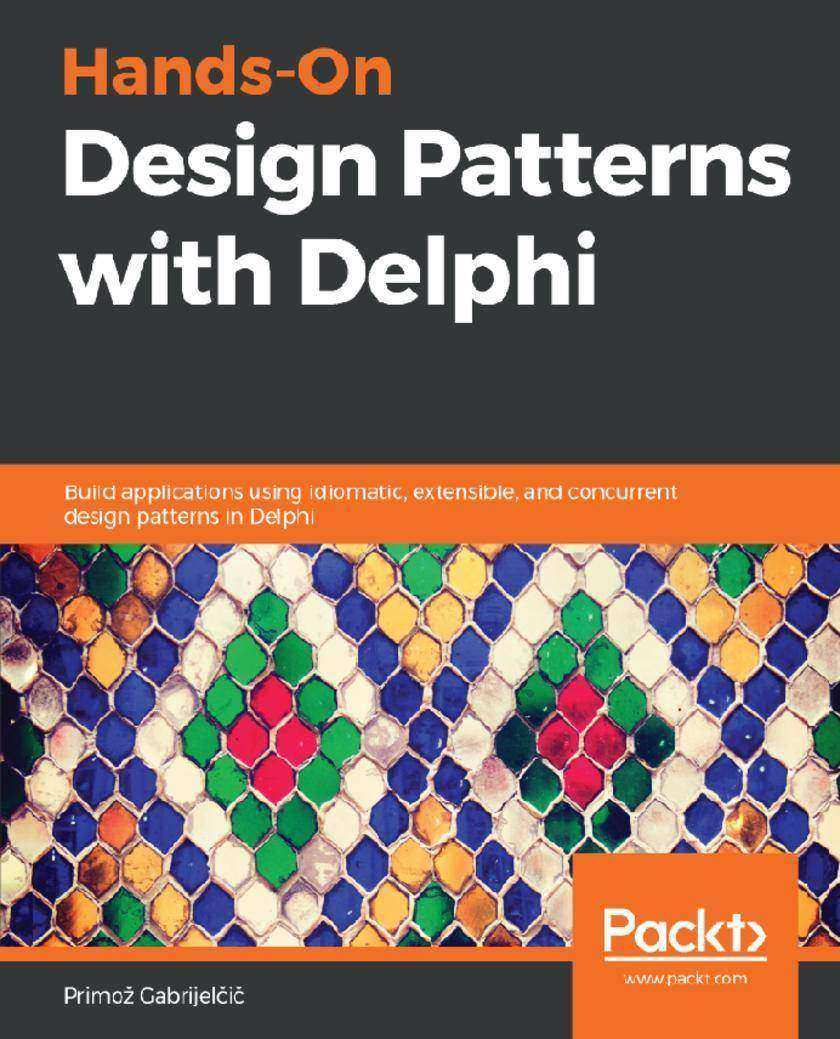
Hands-On Design Patterns with Delphi
¥81.74
Get up to speed with creational, structural, behavioral and concurrent patterns in Delphi to write clear, concise and effective code Key Features * Delve into the core patterns and components of Delphi in order to master your application's design * Brush up on tricks, techniques, and best practices to solve common design and architectural challenges * Choose the right patterns to improve your program’s efficiency and productivity Book Description Design patterns have proven to be the go-to solution for many common programming scenarios. This book focuses on design patterns applied to the Delphi language. The book will provide you with insights into the language and its capabilities of a runtime library. You'll start by exploring a variety of design patterns and understanding them through real-world examples. This will entail a short explanation of the concept of design patterns and the original set of the 'Gang of Four' patterns, which will help you in structuring your designs efficiently. Next, you'll cover the most important 'anti-patterns' (essentially bad software development practices) to aid you in steering clear of problems during programming. You'll then learn about the eight most important patterns for each creational, structural, and behavioral type. After this, you'll be introduced to the concept of 'concurrency' patterns, which are design patterns specifically related to multithreading and parallel computation. These will enable you to develop and improve an interface between items and harmonize shared memories within threads. Toward the concluding chapters, you'll explore design patterns specific to program design and other categories of patterns that do not fall under the 'design' umbrella. By the end of this book, you'll be able to address common design problems encountered while developing applications and feel confident while building scalable projects. What you will learn * Gain insights into the concept of design patterns * Study modern programming techniques with Delphi * Keep up to date with the latest additions and program design techniques in Delphi * Get to grips with various modern multithreading approaches * Discover creational, structural, behavioral, and concurrent patterns * Determine how to break a design problem down into its component parts Who this book is for Hands-On Design Patterns with Delphi is aimed at beginner-level Delphi developers who want to build scalable and robust applications. Basic knowledge of Delphi is a must.




 购物车
购物车 个人中心
个人中心



